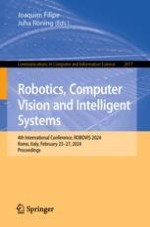2024 | Buch
Robotics, Computer Vision and Intelligent Systems
4th International Conference, ROBOVIS 2024, Rome, Italy, February 25–27, 2024, Proceedings
herausgegeben von: Joaquim Filipe, Juha Röning
Verlag: Springer Nature Switzerland
Buchreihe : Communications in Computer and Information Science
